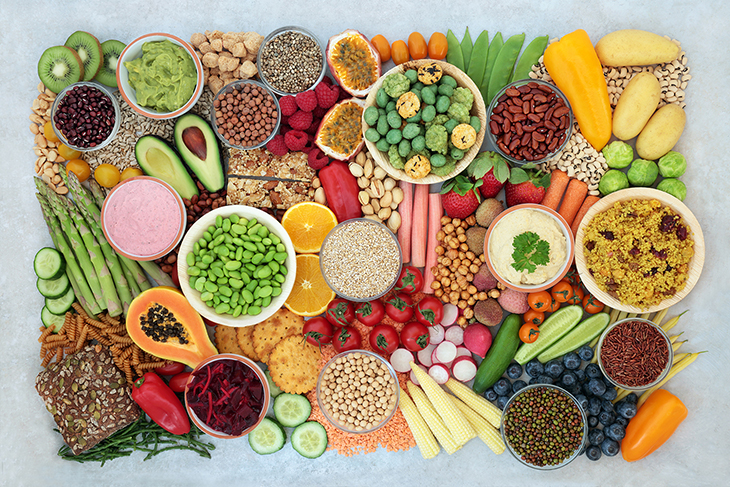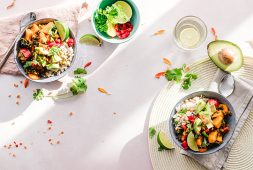
Examining twins can mitigate the impact of lifestyle and background variations that might affect the outcomes of randomized medical studies involving unrelated individuals. A recent investigation observed positive changes in already healthy subjects after just four weeks of adopting a meatless diet.
In a study involving 22 pairs of identical twins, researchers discovered that individuals who adhered to a vegan diet for eight weeks showed improvements in cholesterol levels, blood sugar, and body weight compared to their meat-eating siblings.
The results, published on November 30 in JAMA Network Open, indicate that even individuals who are already in relatively good health can enhance their long-term well-being by adopting a vegan diet within a two-month period, as suggested by the authors.
The researchers intentionally sought to enroll “living, breathing, walking” identical twins, excluding individuals with preexisting risk factors for heart disease, such as high LDL (bad) cholesterol, overweight, or obesity, according to senior author Christopher Gardner, PhD, a professor of medicine at the Stanford Prevention Research Center in California.
“Yes, some of the twins had extra weight or high cholesterol, but a lot didn’t. They were already trim with normal cholesterol. And still, the vegan group lowered their LDL cholesterol by more than 10 percent and lost weight. We were surprised that it happened so quickly and in a group that didn’t really have high LDL cholesterol to begin with,” Dr. Gardner said.
Only 1% of Americans Follow a Vegan Diet
A vegan diet eliminates all forms of meat, including beef, pork, poultry, seafood, and fish, as well as animal-derived products such as dairy and eggs.
According to an August 2023 Gallup poll in the United States, 4 percent of respondents identify as vegetarians, while 1 percent follow a vegan lifestyle. The survey revealed that individuals who identify as women, describe themselves as politically liberal, and report an annual income of less than $40,000 are more inclined to adopt a vegetarian diet.
Twins Made the Study Unique
The research comprised 22 sets of identical twins, totaling 44 participants, all of whom were in good health and free of heart disease. The participants were drawn from the Stanford Twin Registry, a repository of both fraternal and identical twins who have consented to engage in research endeavors. Each twin pair was allocated to either a vegan diet or an omnivore diet, the latter including meat, animal products such as eggs and cow’s milk, as well as vegetables.
The twin portion of the study was an enjoyable one for the researchers, Dr. Gardner shared. “It was just so fun to observe them when everyone got together. They had a great banter, wonderful stories — and they often dressed alike and had the same hairstyles!”
He emphasizes that the incorporation of identical twins is a crucial element that sets this study apart. While many nutrition studies typically rely on observational methods, this approach is often chosen due to the difficulty in persuading individuals to alter their eating habits and adhere to the changes for extended periods, according to Gardner.
Most nutritional studies look into observing how vegans, omnivores, or pescatarians eat and, for instance, then reporting these health outcomes that the study is aiming to highlight, he said. “And the obvious downside there is that the vegans were probably different than the omnivores for other reasons, too. They not only have behaviors that can influence their risk, but there are also genetic factors at play as well, and that’s true for randomized studies as well.”
Researchers employed identical twins to control for genetic factors and minimize other variables. This approach was chosen because twins share the same upbringing and typically exhibit similar lifestyles.
Vegan and Omnivore Diet Considered Good
The plant-based diet adhered strictly to vegetables, beans, fruits, and whole grains, completely excluding any meat or animal-derived products. Conversely, the omnivorous diet encompassed a variety of animal-sourced foods such as chicken, fish, eggs, cheese, and dairy.
It’s noteworthy that both diets in the study were characterized by overall healthiness, incorporating ample amounts of vegetables, beans, fruits, and whole grains. Additionally, neither diet included sugars or refined starches.
“I’m opposed to dietary studies where the ‘favored’ diet is compared to eating a poor diet. That’s an easy thing to beat. We wanted to compare the benefits of a healthy vegan diet to a healthy omnivore diet because it makes the findings even more compelling,” he said.
In the initial four weeks, a meal service provided 21 meals each week, comprising seven breakfasts, lunches, and dinners. Subsequently, participants took charge of preparing their own meals for the remaining four weeks.
According to Gardner, utilizing the meal service offered several advantages. Firstly, it ensured clarity regarding the components permissible in the vegan diet, eliminating any potential confusion, he explained.
“It also gave people in the vegan group an opportunity to understand what could be included. It’s way more than ‘rabbit’ food or a salad with lettuce. It could be a tofu stir fry with lots of crunchy veggies, a lentil black bean burger, a Mediterranean salad with lots of beans and nuts — all very filling,” said Gardner.
21 out of 22 individuals following a vegan diet successfully completed the study, further highlighting the widespread applicability and ease of adoption of this dietary choice, according to the speaker.
Vegans with Bigger Drops in Cholesterol, Fasting Blood Sugar, and Weight
During the initial four weeks of the diet change, researchers noted the most significant enhancements in heart health.
The baseline LDL-C level averaged 110.7 milligrams per deciliter (mg/dL) for vegans and 118.5 mg/dL for omnivores. By the study’s conclusion, it decreased to 95.5 mg/dL for vegans (a roughly 13 percent reduction) and 116.1 mg/dL for omnivores, with the optimal healthy LDL-C level being less than 100 mg/dL.
Vegan participants also exhibited a notable 20 percent decline in fasting insulin, a risk factor for diabetes, and shed an average of 4.2 more pounds than their omnivorous counterparts. At the trial’s outset, participants had an average BMI of 25.9 kg/m2, slightly above the healthy range (18.5 to 24.9 kg/m2) according to the Centers for Disease Control and Prevention (CDC).
Further examination of participants’ biological ages, representing their physical and metabolic age, revealed that at the study’s end, those following the vegan diet were “a little younger” than their omnivorous counterparts, as highlighted by Gardner in a video discussing the study.
“Based on these results and thinking about longevity, most of us would benefit from going to a more plant-based diet,” he said.
Vegan Diet and Heart Health
According to Gardner, individuals following a vegan diet took three key steps to enhance cardiovascular health: reducing saturated fat intake, increasing dietary fiber, and achieving weight loss.
Gardner notes that the majority of Americans consume only half of the recommended fiber amount.
The U.S. Department of Agriculture (USDA) suggests a dietary fiber intake of 14 grams per 1,000 calories of food. For instance, at a reference level of 2,000 calories (suitable for some individuals but not all), the daily dietary fiber intake should be 28 grams.
A review published in the International Journal of Environmental Research and Public Health in February 2023 aligns with these findings, indicating that a vegetarian or vegan diet is linked to improvements in cardiovascular health and overall mortality.
While the precise mechanism behind these benefits is not fully understood, it is suspected that the saturated fats present in animal meat and products may trigger low-grade systemic inflammation, potentially contributing to heart disease.
Trying a Protein Flip
If you’re not prepared to embrace a completely vegan diet, you can make progress towards consuming more vegetables and plant-based protein while reducing your meat intake through a “protein flip,” as suggested by Gardner.
“Most Americans think the center of the plate is chicken, beef, or pork and then the side dishes that go with it are grains and vegetables. The protein flip is putting plants at the middle of the plate — the meat is no longer the centerpiece, but rather a flavoring or a side dish,” he added.
One way to try this out is to go for a bowl, which is often seen in student dining halls or supermarket hot bars. “You can build your own. So maybe there’s meat there, but there could also be tempeh, or tofu, and grains and veggies along with it,” he said. The protein flip, on the other hand, doesn’t cut meat out completely, but it can help lessen meat consumption, Gardner also said.



